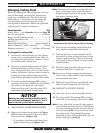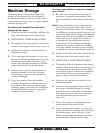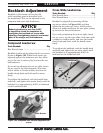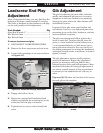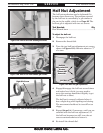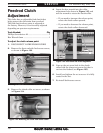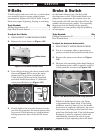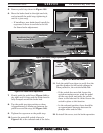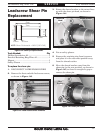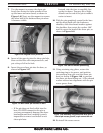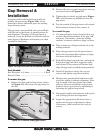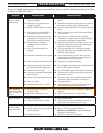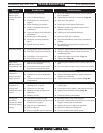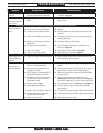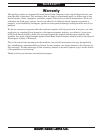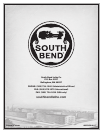
TROUBLESHOOTING
-74-
For Machines Mfg. Since 7/09
EVS Toolroom Lathes
TROUBLESHOOTING
If you need replacement parts, or if you are unsure how to do any of the solutions given here, feel free
to call us at (360) 734-1540.
Symptom Possible Cause Possible Solution
Machine does not
start or a circuit
breaker trips.
1.
(First time operation only) Lathe is
wired out of phase.
1.
Correct out-of-phase wiring (refer to Page 17 for
details).
2.
Emergency stop push-button is
engaged or at fault.
2.
Rotate button clockwise until it pops out to reset it
for operation; replace if not working properly.
3.
Spindle ON/OFF switch is at fault.
3.
Move the spindle ON/OFF lever to ON; replace bad
switch.
4.
Power supply is switched OFF at
main power switch or breaker.
4.
Make sure main power switch and circuit breaker
are turned ON.
5.
Wall fuse/circuit breaker is blown/
tripped; short in electrical system;
start-up load too high for circuit.
5.
Verify circuit is rated for machine amp load;
troubleshoot and repair cause of overload; replace
weak breaker; find/repair electrical short.
6.
Fuse has blown in machine
electrical box due to thermal
overload.
6.
Replace fuse; determine if overload is due to heavy
operation; ensure power source has high enough
voltage and cord is correctly sized.
7.
One or more kill switches are
engaged.
7.
Verify electrical box door, chuck guard, spindle,
and brake switches are not engaged. Verify that
headstock oil is pumping.
8.
Thermal overload relay has tripped.
8.
Turn the thermal relay cut-out dial to increase
working amps and push the reset pin. Replace if
tripped multiple times (weak relay).
9.
Motor connection wired incorrectly.
9.
Correct motor wiring connections.
10.
Oil pump motor operating, but no
oil is seen pumping in sight glass.
10.
Clean clogged tank suction screen, fill headstock oil
tank to full, or replace oil pump.
11.
Limit/kill switch at fault.
11.
Test all limit/kill switches and replace as necessary.
12.
Contactor not getting energized/has
burnt contacts.
12.
Test for power on all legs and contactor operation.
Replace unit if faulty.
13.
Wiring is open/has high resistance.
13.
Check for broken wires or disconnected/corroded
connections, and repair/replace as necessary.
14.
Motor is at fault.
14.
Test/repair/replace.
15.
Frequency drive unit is at fault.
15.
Contact frequency drive manufacturer for list of
authorized service providers in your area.
Loud, repetitious
noise coming from
lathe at or near the
motor.
1.
Pulley set screws or keys are
missing or loose.
1.
Inspect keys and set screws. Replace or tighten if
necessary.
2.
Motor fan is hitting the cover.
2.
Tighten fan, shim cover, or replace items.
Motor overheats.
1.
Motor overloaded.
1.
Reduce load on motor.
2.
Frequency drive unit is at fault.
2.
Contact frequency drive manufacturer for list of
authorized service providers in your area.
Motor is loud when
cutting, or bogs
down under load.
1.
Excessive depth of cut or feed rate.
1.
Decrease depth of cut or feed rate.
2.
Spindle speed or feed rate wrong for
cutting operation.
2.
Refer to the feeds and speeds charts in
Machinery's Handbook or a speeds and feeds
calculator on the internet.
3.
Cutting tool is dull.
3.
Sharpen or replace the cutting tool.



